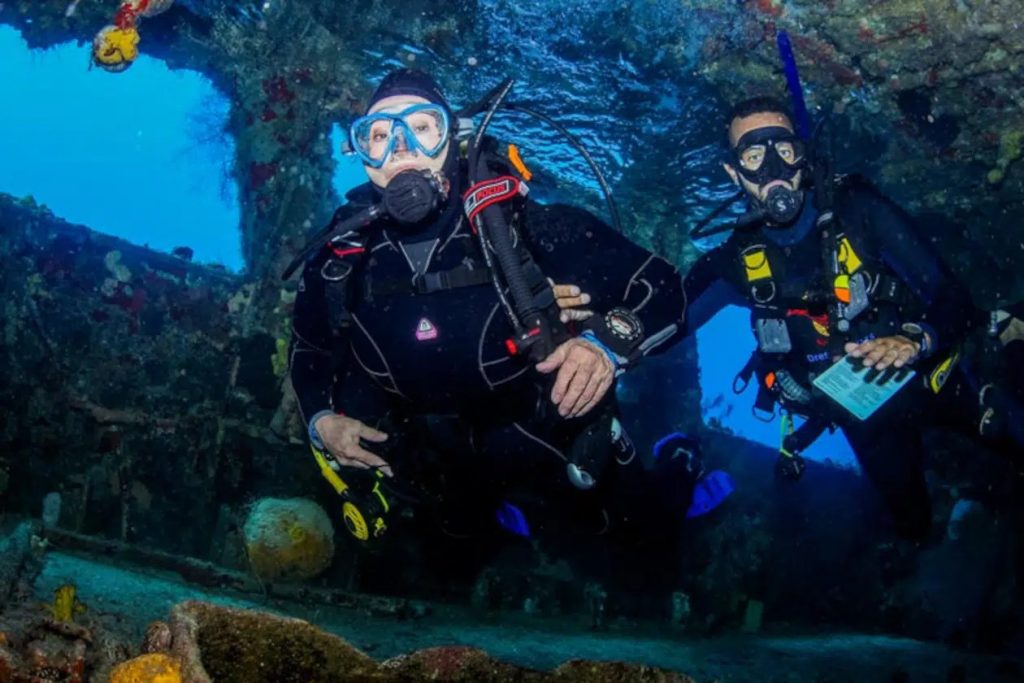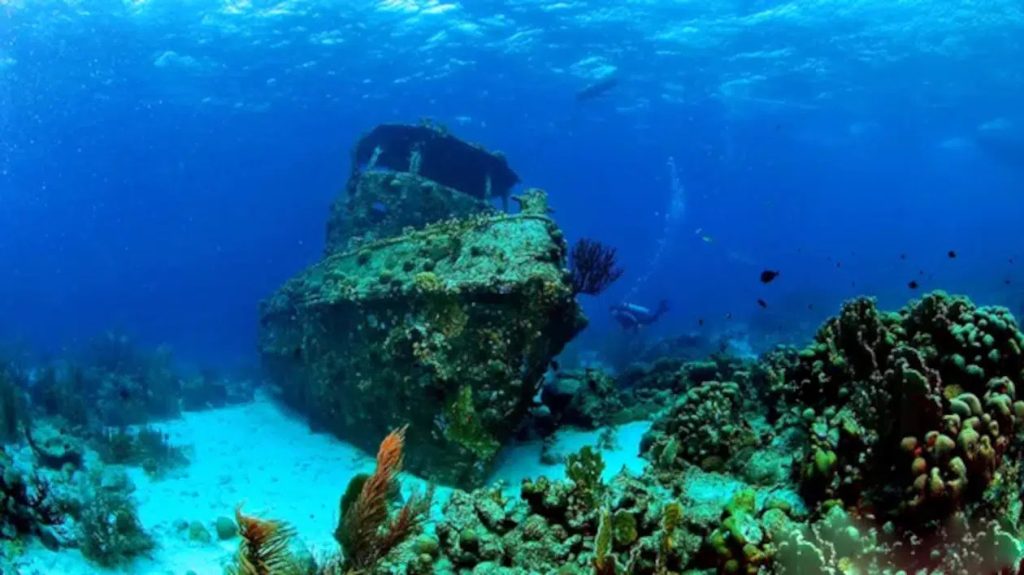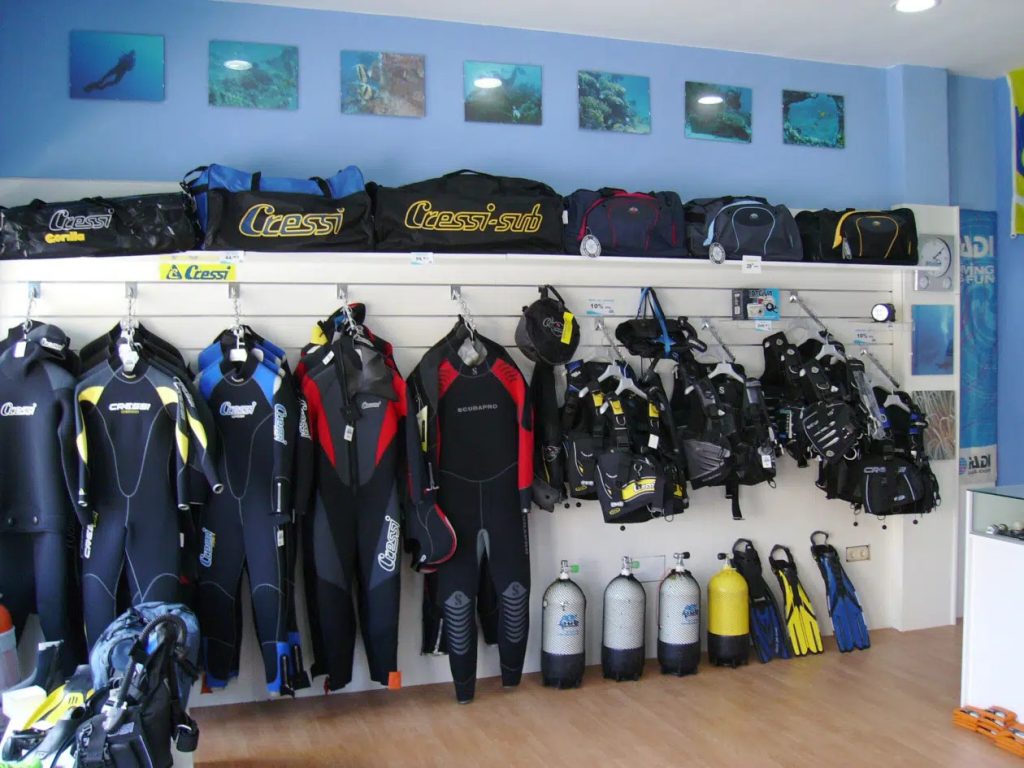Shipwreck diving is a branch of diving in which the remains of ships, as well as airplanes or other artificial structures, are explored.
These underwater structures can result from accidents or may have been intentionally placed there to form artificial reefs.

Some divers believe that wreck diving is particularly special because it transports us through time and allows us to feel, see, and imagine the things that happened before these structures clung to the seabed. It’s like visiting a world that once was and remained still beneath the sound of the deep sea.
Structures of Life
These artificial structures serve a very special function today. They act as homes to hundreds of creatures, corals, and microorganisms that have turned them into their habitat and form colonies in every available corner.
Within a few hours of a ship sinking or an artificial structure being installed, colonization begins. The hard structure of an artificial reef is slowly colonized by soft corals, sponges, plants, and small fish.
Nearby sand sediments suddenly come to life with starfish, sea urchins, and many other species of invertebrates.
Wreck diving is special because it transports you through time, but it also allows you to see how life finds its way and takes over what was built by us. It’s incredible to observe how nature adapts and thrives in these environments, transforming something that could be seen as a disaster into a vibrant ecosystem full of life. Each wreck tells a story, not only of its human past but also of its biological present.
Shipwreck diving-What do you need for wreck diving?

Wreck diving offers an exciting mix of history, adventure, and underwater exploration, but it requires more than standard diving equipment. To dive safely and effectively, you need specialized equipment and training that prepare you for the unique challenges of navigating submerged structures.
PADI recommends the Wreck Diver course, which you can access once you have completed your PADI Open Water Diver certification. The course has its own manual.
Training
First and foremost, for shipwreck diving, acquiring the right training is essential. The PADI Wreck Diver course is highly recommended as it provides the skills and knowledge necessary for safe wreck diving.
This course teaches you how to inspect and map wrecks, use lines and reels to guide your penetration, and avoid potential hazards such as entanglements. Completing this training ensures that you are well-prepared to handle the complexities of wreck diving.
Equipment

As for equipment, a good diving flashlight is indispensable. Shipwrecks can be dark and confined, and a reliable light helps you see into cracks and compartments.
It’s also a good idea to carry a backup light in case your main light fails. Additionally, a dive slate or underwater notebook allows you to take notes and communicate with your dive buddy without having to surface.
A compass is crucial for navigation, helping you maintain your bearings and find your way back to your entry point. For deeper penetrations, a reel with a line guide is used to mark your path, ensuring you can return safely. This is particularly important in complex wrecks where it’s easy to become disoriented.
Thermal Protection
Furthermore, using appropriate thermal protection is important as wreck diving often involves descending to colder depths. A full wetsuit or drysuit, depending on water temperature, will keep you comfortable throughout the dive.
Dive Buddy
Finally, when you are shipwreck diving always dive with a buddy and communicate clearly. Diving with a buddy increases safety, enhances the experience, allowing you to share discoveries and help each other in case of emergencies.
Wreck diving can be a rewarding and unforgettable underwater adventure. By combining proper training, the right equipment, and a cautious approach.
Additionally, for wreck diving, it’s necessary to have additional equipment such as:
- Flashlight, to look inside the structures
- A slate.
- Compass for navigation.
- A rope or reel for penetrations.
- Additional equipment recommended by local instructors.
It’s also crucial to have a prepared and risk-aware mindset. Safety should be your priority, which means being well-trained and following expert recommendations.
Imagine the excitement of exploring a wreck, knowing that every corner could reveal something new and unexpected. But also, always remember to respect the environment and the history you’re exploring.
Remember to contact a local diving center
PADI recommends that divers wishing to dive in unknown areas contact a local dive center. Additionally, they should participate in guided experiences. This will allow them to make the most of each dive and enjoy safe diving. Highly recommended when planning to practice wreck diving.
